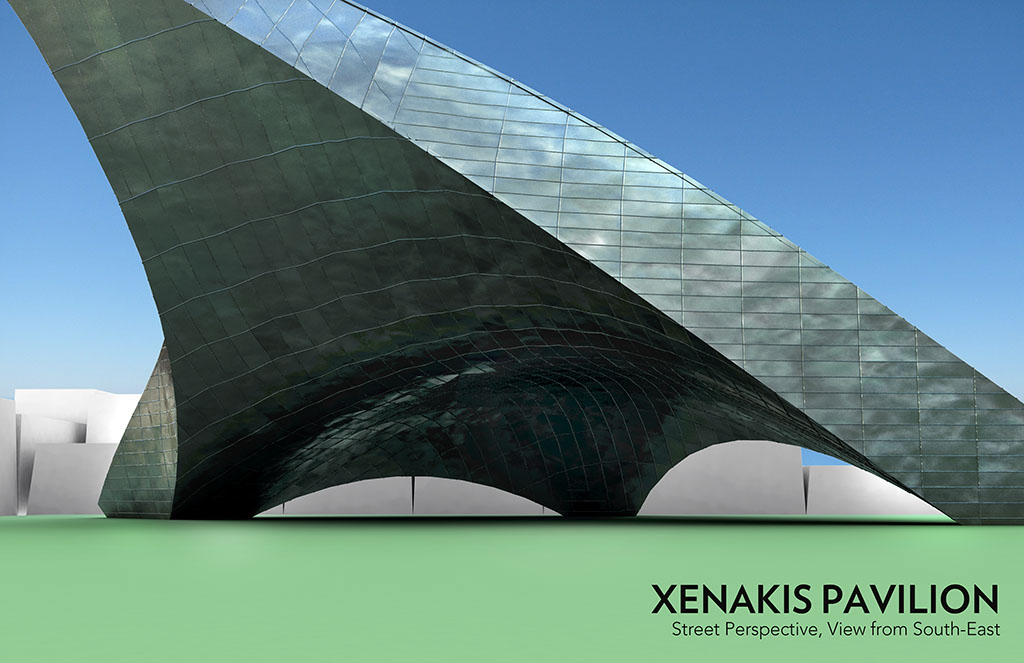Xenakis Pavilion
This architectural project involved designing a memorial space for prominent 20th-century composer and architect Iannis Xenakis. As Xenakis' work in both of those fields made ample use of mathematical formulas and complex curves (the hyperbolic paraboloid in particular), this memorial is designed with this tradition in mind, and serves as both an architectural sculpture and a functional sonically-capable space.
The form is derived from a hyperbolic paraboloid (double-curved) surface, extruded to gain depth and constructed in a tensile grid-shell method, much like other structures such as Xenakis' own Philips Pavilion, from the 1958 World Expo. The inner frame is made from welded steel, with anchors sunk deep into the ground in concrete. A mesh of structural steel cable spans the outer and inner surfaces, which is then clad with titanium-zinc alloy plating, similar to that of Daniel Libeskind's Jewish Museum Berlin.
Inside the large metal "canopy" is created a concave space which accommodates musical performances or other public gatherings, and projects sound outwards from the "prow" of the form, across the 60m-long field. This setup is ideal for all manner of public musical gatherings, performances, etcetera.
This was predominantly a conceptual project, and was executed through several stages of brainstorming, model-making, and drawings.
Conceptual Renders



Exploded & Detail Drawings



Presentation Model







